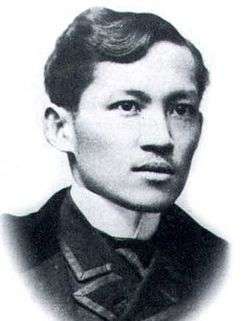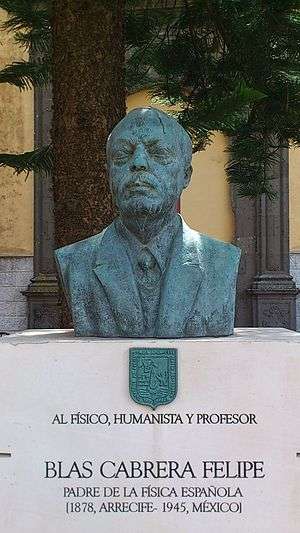Complutense University of Madrid
| Spanish: Universidad Complutense de Madrid | |
 | |
| Latin: Universitas Complutensis Matritensis | |
Former name | Estudio de Escuelas Generales de Alcalá (1293-1499) |
|---|---|
| Motto | Latin: Libertas Perfundet Omnia Luce |
Motto in English | Freedom will flood all things with light |
| Type | Public university |
| Established | 20 May 1293 |
| Budget | €607.559.030 |
| Rector | Carlos Andradas Heranz |
Administrative staff | 11,162 |
| Undergraduates | 74,771 |
| Postgraduates | 11,388 |
| Location | Madrid, Spain |
| Campus | Urban (Ciudad Universitaria and Somosaguas) |
| Student Associations | 107 Groups |
| Colours | Amaranth & Dijon |
| Website |
www |
The Complutense University of Madrid (Spanish: Universidad Complutense de Madrid or Universidad de Madrid, Latin: Universitas Complutensis) is a public research university located in Madrid, and one of the oldest universities in the world. The university enrolls over 86,000 students ,[1] and consistently ranks as one of the top universities in Spain.[2][3] It is located on a sprawling campus that occupies the entirety of the Ciudad Universitaria district of Madrid, with annexes in the district of Somosaguas in the neighboring city of Pozuelo de Alarcón.
In recent years, the roster of alumni comprises winners of the Nobel Prize (7), Prince of Asturias Awards (18), Miguel de Cervantes Prize (7), as well as European Commissioners, Presidents of the EU Parliament, European Council Secretary General, ECB Executive Board members, NATO Secretary General, UNESCO Director General, IMF Managing Director, and Heads of State. According to the Spanish newspaper El Mundo, the university is widely regarded as the most prestigious academic institution in Spain.[4]
In the course of over seven centuries, the University of Madrid has provided invaluable contributions in the sciences, fine arts, and political leadership. Alumni include renowned philosophers (José Ortega y Gasset, Ignatius of Loyola, Thomas of Villanova), writers (Federico García Lorca, Antonio de Nebrija, Pedro Calderón de la Barca), scientists (Santiago Ramón y Cajal, Severo Ochoa, Andrés Manuel del Río), historians (Juan de Mariana, Juan Ginés de Sepúlveda), military leaders (Don John of Austria, Alexander Farnese, Cardinal Cisneros), foreign leaders (Cardinal Mazarin, José Rizal), and many Prime Ministers of Spain. In the year 1785, the University of Madrid became one of the first Universities in the world to grant a Doctorate degree to a female student.[5] By Royal Decree of 1857, the University of Madrid was the only institution in Spain authorized to grant doctorates throughout the Spanish Empire.
History

On May 20, 1293, King Sancho IV of Castile granted the Archbishop of Toledo, Gonzalo García Gudiel, a Royal Charter to found a Studium Generale (as Universities were known at that time), named El Estudio de Escuelas de Generales in Alcalá de Henares.[6] One of its alumni, Cardinal Cisneros, made extensive purchases of land and ordered the construction of many buildings, in what became the first university campus ex-novo in history: The Civitas Dei, or city of God, named after the work of Augustine of Hippo. On 13 April 1499, Cardinal Cisneros secured from Pope Alexander VI a Papal bull to expand Complutense into a full university. This Papal Bull conferred official recognition throughout Christendom to all degrees granted by the University. It also renamed the institution Universitas Complutensis, after Complutum, which was the Latin name of Alcalá de Henares, where the University was originally located.
In the 1509–1510 school year, the Complutense University already operated with five major schools: Arts and Philosophy, Theology, Canon law, Philology and Medicine.[7][8] During the 16th and 17th centuries, Complutense University became one of the greatest centers of Academic excellence in the world. Many of the leading figures in science, arts and politics of that Age studied or taught in Complutense's classrooms.[9] Special colleges were created for students of foreign origin, such as Flemish or Irish.
In 1785, Complutense became one of the first Universities in the world to grant a Doctorate to a female student, María Isidra de Guzmán y de la Cerda.[5] In comparison, University of Oxford did not accept female scholars until the year 1920,[10] and the University of Cambridge did not grant a Ph.D. to a female student until the year 1926.[11]
In 1824, Francisco Tadeo Calomarde further expanded Complutense by merging it with the University of Sigüenza.[12] By a royal order of 29 October 1836, Queen Regent Maria Christina suppressed the university in Alcalá and ordered its move to Madrid, where it took the name of Literary University and, in 1851, of Central University of Madrid. The University would be known under this name until its original name of "Complutense" was restored in the 1970s.

The University of Madrid awarded Albert Einstein a Doctor of Science degree Honoris Causa on 28 February 1923. This was the first Doctor of Science degree Honoris Causa that Albert Einstein accepted from a European University. In April 1933 the Minister for Education and the Arts, Fernando de los Ríos, announced that Einstein had agreed to take charge of a professorship in a research institute, which would bear the name Instituto Albert Einstein, under the University's School of Science.[13] However, as the political situation began to deteriorate throughout Europe, Prof. Einstein ended up accepting a similar position at Princeton University.
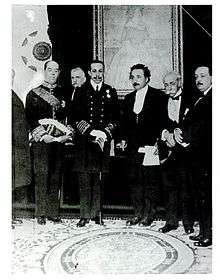
The University greatly expanded during the 19th century, and its accommodations in central Madrid proved to be increasingly inadequate. Besides the greater number of students, after its move from Alcalá the University had been based in a number of preexisting, government-acquired properties – mainly aristocratic mansions and royal châteaux from centuries past, abandoned by their owners for more contemporary lodgings. Though they were not without their charm, the ancient buildings were not precisely ideal as educational settings, and the early 20th century witnessed the students of the Central University attending philosophy lectures and anatomy lessons in elaborate spaces that had served as ballrooms and salons only a few decades prior.
This situation changed in 1927, when by royal decree King Alfonso XIII officially ceded state-held lands in the proximity of the Palace of La Moncloa to establish space for the University of Madrid. At the time, this constituted all of the land between the Royal Palace and the Palace of El Pardo, and today comprises a vast swath of western Madrid referred to as the "Ciudad Universitaria", or University City of Madrid.
A council appointed by King Alfonso XIII had decided that the new University of Madrid would require the innovative architecture and planning. A team of academics was sent out on an international expedition to visit the most prestigious universities in Europe and North America, to combine the best of both continents and design the utopian academic setting. The trip took them to 19 universities in the American northeast, as well as to Paris, Lyon, Oxford, Berlin, Hamburg, and numerous other European cities, all in an effort to discern the best possible building structure. The architectural tendencies of the era, however, ended up having a greater influence than the academics' visits to Harvard, the University of Pennsylvania, La Sorbonne or the University of Berlin; while the final plans from this period are hardly recognizable to anyone familiar with the contemporary campus, the buildings from the era that managed to survive the design revisions, the Civil War and the Franco regime, betray the period's fondness for the German Bauhaus movement. Indeed, the original buildings, exemplary amongst them the Schools of Medicine, Pharmacy and Odontology, are an homage to structural functionalism and the graceful utilitarianism of the 1920s.
In the 1970s, following the political instability of the regime of Francisco Franco, the University of Madrid was renamed, dividing existing colleges between the Complutense University of Madrid and the Technical University of Madrid. The city of Alcalá de Henares decided to open a university within the older campus buildings, it was named Universidad de Alcalá de Henares to clearly distinguish it from the Complutense University.
The Complutense University of Madrid today

The University of Madrid has played a major role in the political development of Spain since its founding. Its graduates have been members, at either Congressional or Ministerial level, in all of the governments of Spain since the Enlightenment, and their positions in the Second Spanish Republic and the post-Franco transition to democracy were particularly notable. The former first Deputy Prime Minister, María Teresa Fernández de la Vega, and the former President, José María Aznar, are both graduates of the university. The Complutense University has also played host to some of the most significant figures of the intellectual world, with a long tradition of visiting professors amongst which feature some of the greats of world academia (most notably, Albert Einstein). A significant part of the European intelligentsia flocked to its halls during the 1930s, when democratic Spain provided a refuge from the rising terrors of fascism. The contemporary Complutense University has also counted numerous Nobel Laureates not only among its graduates, but also its faculty members over the years.
_01.jpg)
Currently, the Complutense University is the largest university in Spain. During the 2004–2005 academic year the University recorded an enrollment of 91,598 students and employed a staff of 9,500, of which over 6000 are directly involved in teaching duties; the University operates on government subsidies, grants and enrollment funds, with a current annual budget of over 500,000,000 euros. The University currently offers nearly 80 possible majors, 230 individual degrees, and 221 doctorate programs. The University has over 30 libraries, with over 2 million works in print, a particularly rich archive of over 90,000 historical documents, and one of the most extensive film collections in Europe.
Due to its long history in the capital, the Complutense University enjoys great support from Madrid-based institutions, at a local, national and international level. The School of Medicine operates the Hospital Clínico Universitario de San Carlos, Hospital Gregorio Marañón, and the most famous one, Hospital October 12, as well as a number of other specialized clinics located on-campus, some of which are operated jointly with the Ministry of Health or perform specific research for the Ministry. The School of Medicine is not the only one with government involvement; indeed, despite past conflicts, the Complutense University shares a close bond with the Spanish government, as both the presidential residence of La Moncloa and the Spanish Constitutional Court are located directly on-campus (with the political center of the city at walking distance).
The School of Communications, meanwhile, enjoys equally good relations with the press (large part of its professors being former reporters, editors, or directors of major Spanish and international newspapers). Moreover, the School is known particularly for its role as one of the premiere pre-screening locales in Spain- all major Spanish film productions are screened first before an audience of Complutense students, with the main actors or production figures of the films attending a post-screening press conference. Most recently, Blanca Portillo, Carmen Maura, Lola Dueñas and Yohana Cobo pre-screened Pedro Almodóvar's Volver; past pre-screening visitors have included director Santiago Segura, actor Alejo Sauras, and writer E. Annie Proulx.
Each year, the Madrid Círculo de Bellas Artes extends special invitations to the Complutense students during its series of annual conferences featuring prominent philosophers, sociologists, and psychologists. Likewise, all of the faculties have been able to benefit greatly by lectures given by some of the most illustrious figures in recent history, of all fields, from singer-songwriter and Catalan activist Joan Manuel Serrat to historian Ernst Gombrich, from writer Umberto Eco to communist politician Santiago Carrillo. Alejandro Amenábar wrote his first film, Tesis, while still attending the Complutense University. All the on-campus scenes in the film were shot in the School of Communications, which Amenábar himself had attended, and the building itself serves as major device in the plot.
Student life and extracurricular activities
The Complutense University publishes a bi-monthly newspaper, the Gaceta Complutense,[14] and also features a fully operational radio station, Radio Complutense (107.5 FM),[15][16] which broadcasts for 12 hours daily; both are run from the School of Communications.[17]
While the University has a select number of registered dormitories, these are located on the fringes of the campus, within border neighborhoods, and therefore no students truly live on campus proper. Due to the costs, and the fact that university-affiliated lodging is not required, the majority of the Complutense's student live independently, either in non-affiliated dormitories or in actual apartments.
The University of Madrid is home to over 100 student political, social and sports-related groups. Aerobics, gym, yoga, swimming, tennis, diving, tai-chi, and numerous other courses are offered. In terms of team sports, the Complutense features male and female basketball, football, and volleyball divisions, as well as rugby. Chess, badminton, golf, judo, karate, table-tennis, and archery teams are also available. Internal university games are held several times a year, with all of the different schools competing; the Complutense also participates in the regional university games, held each March at the Puerta del Hierro Stadium in Madrid, and selected national competitions. All students, professors, staff-members, and family of staff-members have the right to be evaluated and attended to at the Complutense University Center for Sport and Fitness Medicine.
The Complutense Abroad
Besides an extensive series of accords permitting student/professor exchanges and study abroad opportunity with prestigious universities throughout the world, the Complutense University of Madrid currently operates four full-time institutions outside of Spain.[18][19]

- The Real Colegio Complutense at Harvard University (Cambridge, Massachusetts):[20] The RCC was founded as a joint cooperative institution to foster intellectual and scientific interaction between Harvard University and Complutense, with the support of HM King Juan Carlos I, HM Queen Sofia of Spain and the Commonwealth of Massachusetts. It follows the tradition of the Royal Spanish College, founded in 1364 to host Spanish Visiting Scholars at the University of Bologna. The RCC accord is the only one of its sort ever to have been approved by Harvard. The institution is directed jointly by the President of Harvard and the Rector of Complutense University, with an academic council formed by 5 Harvard professors and 5 Complutense professors. It permits a select number of Complutense professors to conduct their research at Harvard as Visiting Scholars. RCC Fellows enjoy the same privileges as Harvard's non-tenured Faculty. Each year the institution hosts the RCC Fellows Lectures, a conference cycle during which the Visiting Scholars deliver lectures revealing the results of their investigations to an audience of Harvard professors and students. Finally, it also permits a small number of students to attend doctoral school at the University as Research Associates, under scholarships hosted by the Spanish Royal Family.
- Collège des Hautes Études Européennes Miguel Servet (Paris, France):[21] founded upon the initiative of the Club Européen des Recteurs, the Collège des Hautes Études Européennes Miguel Servet is a Franco-Iberian center of learning and research located within the La Sorbonne. Besides specialized degrees, it offers programs focused on jurisprudence and economy within the European Union, a double-major program in Franco-Iberian law, and the Diplôme de Formation Européenne, which is operates under the auspices of the European Union and UNESCO. It was awarded a status of 'centre d'excellence', and in 1995 it opened chapters in Italy, Portugal, and South America.
- Cátedra Complutense en la Universidad de Karlova (Prague, Czech Republic):[22] Full campus in operation, offering bachelor and doctoral degrees in partnership with Charles University (Univerzita Karlova v Praze) in Prague.
- Cátedra Dubcek (Bratislava, Slovakia):[23] Full campus in operation, offering bachelor and doctoral degrees in partnership with Comenius University in Bratislava.
Famous alumni
Government
Pre-20th century
- Don John of Austria – Victor of the Battle of Lepanto, Spanish Governor of the Netherlands, Grandee of Spain, the last Knight of Europe.
- Alexander Farnese, Duke of Parma, – Duke of Piacenza.
- Cardinal Mazarin – 2nd Prime Minister of France (1642–1661), successor of Cardinal Richelieu.
- Gaspar de Borja y Velasco - Served as Primate of Spain, Archbishop of Seville, Archbishop of Toledo and viceroy of Naples.
- Gaspar Melchor de Jovellanos – Prime Minister of Spain, theorist behind the Constitution of 1812
- Nicolás Salmerón y Alonso – President of the First Spanish Republic
- Emilio Castelar y Ripoll – Journalist, Essayist, Minister during the First Spanish Republic
II Spanish Republic
- Manuel Azaña – Head of State & President of Spain at various points throughout the Second Spanish Republic
- Juan Negrín López – Last President of the Second Spanish Republic
- Gregorio Marañón – Spanish physician, scientist, historian, writer, philosopher and political reformer
- Julián Besteiro Fernández – Socialist Politician, Deputy during the Second Spanish Republic
- Clara Campoamor – Feminist Politician, Deputy during the Second Spanish Republic
- Victoria Kent – Essayist, Feminist, Deputy during the Second Spanish Republic
- Claudio Sánchez-Albornoz y Menduiña – Historian, Deputy during the Second Spanish Republic
- Fernando de los Ríos Urruti – Anarquist Politician during the Second Spanish Republic
Transition and Contemporary Administrations
- Cesar Acuña – Peruvian Presidential candidate -->
 Cesar Acuña
Cesar Acuña - Adolfo Suárez – first democratically elected Prime Minister after the Franco regime
- Américo Castro – Politician, Spanish cultural historian, philologist, and literary critic
- José María Aznar – Former President of the Spanish Government (1996–2004)
- Javier Solana – European Union foreign policy chief and former NATO Secretary General
- Esperanza Aguirre – Former regional President of Madrid
- Enrique Barón Crespo – President of the European Parliament
- Manuel Fraga Iribarne – Former Interior Minister/Father of the Spanish Constitution of 1978/Founder and President of the Spanish conservative People's Party/former President of the Xunta de Galicia/Member of the Spanish Senate
- María Teresa Fernández de la Vega – Former Vice President of the Spanish Government (2004—)
- Marcelino Oreja Aguirre – Secretary General of the Council of Europe/Member of the European Parliament /European Commissioner for Transport/European Commissioner for Institutional Relations and Communication Strategy
- Manuel Prado y Colón de Carvajal – Spanish diplomat/Politician/Royal Senator/Administrator of the Royal Household
- Rodrigo Rato – Politician/former Spanish Minister of Economy and Finance/9th Chairman of the International Monetary Fund
- Josep Borrell – former President of the European Parliament
- Manuel Marín – member of the European Commission and President during the interim Marin Commission/President of the Congress of Deputies of Spain
- José Bono – former President of Castile–La Mancha, former Defense Minister, former president of the Spanish Congress of Deputies
- Ana Palacio – former Spanish Minister of Foreign Affairs
- Alfredo Pérez Rubalcaba – Chemist/ former minister of the Ministry of Education (Spain), former Defense Minister, former minister of the Spanish Interior Minister
- Elena Salgado – current Spanish Minister of Economy and Finance
- German Vargas Lleras – current Ministry of the Interior and Justice (Colombia)
- José María Barreda – current President of Castile–La Mancha
- José Manuel González Paramo – Member of the Executive Board of the European Central Bank
Royal Family
- Infanta Cristina of Spain – Spanish princess, the younger daughter of King Juan Carlos I and Queen Sofía of Spain.
- Letizia Ortiz Rocasolano – Queen consort of Spain
Journalism and literature
- Antonio de Nebrija – writer
- Antonio Machado – poet, member of the Generación del '98 literary movement
- Camilo José Cela – writer, poet, Nobel Prize in Literature (1989), Miguel de Cervantes Prize Recipient, member of the Generación del '50 literary movement
- Concepción Arenal – journalist, essayist, political figure
- Dámaso Alonso y Fernández de las Redondas – writer, poet, philologist, member of the Generación del '27 literary movement, Miguel de Cervantes Prize Recipient
- Enrique Tierno Galván – writer, politician
- Federico García Lorca – poet, playwright
- Félix Lope de Vega y Carpio – Spanish playwright
- Fermín Caballero – early journalist / publisher, Congressional Deputy
- Francisco Ayala – writer, Nobel Prize for Literature Candidate, Principe de Asturias Award for Literature, Miguel de Cervantes Prize Recipient
- Francisco de Quevedo – classical writer
- Gerardo Diego – writer, poet, Member of the Spanish Royal Academy, Member of the Generación del '27 literary movement, Miguel de Cervantes Prize Recipient
- Giannina Braschi – author of Empire of Dreams, Yo-Yo Boing!, and United States of Banana
- Jacinto Benavente – playwright, Nobel Prize in Literature (1922)
- Javier Marías – writer, translator, member of the Spanish Royal Academy
- José Echegaray y Eizaguirre – writer, Nobel Prize in Literature (1904)
- José Rodríguez Carracido – writer, pharmacist, chemist
- María Zambrano – writer, philosopher
- Mario Vargas Llosa – Peruvian writer (naturalized Spaniard), Principe de Asturias Award, Miguel de Cervantes Prize, Nobel Prize in Literature (2010)
- Miguel de Unamuno – writer, member of the Generación del '98 literary movement, Neo-Humanist Philosopher
- Pío Baroja – writer, member of the Generación del '98 literary movement
- Ramiro Ledesma Ramos – writer, politician
- Torcuato Luca de Tena y Álvarez-Ossorio – journalist, founder of ABC
- Juan Ignacio Luca de Tena – journalist, playwright, diplomat
- Vicente Aleixandre – writer, poet, Nobel Prize in Literature (1970)
- Xosé Luís Méndez Ferrín – writer
- José Ortega Spottorno – journalist, founder of Alianza Editorial, co-founder of El País
- Jesús de Polanco – journalist, co-founder of El País, founder of Editorial Santillana, Grupo PRISA and Cadena SER
- Juan Luis Cebrián – journalist, co-founder and former editor-in-chief of El País, member of the Real Academia Española, head of Grupo PRISA
Philosophy

- Antonio de Nebrija – Renaissance Humanist, Philologist
- Domingo de Soto – Philosopher, Theologian, Theorist at the Council of Trent
- Fernando Savater – Philosopher
- José Gaos y González Pola – Neo-Humanist Philosopher
- Jose Luis López Aranguren – Philosopher
- José Ortega y Gasset – Neo-Humanist Philosopher, Founder of Ratio-Vitalism, Writer, Journalist, Deputy during the Second Spanish Republic
- Julián Marías – Philosopher
- Francisco Elías de Tejada y Spínola – Philosopher, Law Theorist, Political Theorist
- María Isidra de Guzmán y de la Cerda – First woman to earn a doctorate in Spain, Philosopher
- Raimon Panikkar – Philosopher, Theologian, Scholar of Comparative Philosophy of Religion
- Tomás de Villanueva – Roman Catholic Saint, Archbishop of Valencia, Theologian
- Xavier Zubiri Apalategui – Philosopher, Philologist
- María Zambrano – Philosopher
History
- Ambrosio de Morales – Historian
- Francisco Giner de los Ríos – Historian
- Juan de Mariana – Historian, Political Theorist
- José Amador de los Ríos – Historian
- Manuel Colmeiro Penido – Economist, Historian, Jurist
- Marcelino Menéndez y Pelayo – Scholar/Historian
- Ramón Menéndez Pidal – Historian
- Salvador Salort-Pons – Art Historian
Medicine
- Carlos Jiménez Díaz – Medical Pioneer
- Florestán Aguilar – Medical Pioneer
- Gregorio Marañón – Physician/Scientist/Historian/Writer/Philosopher
- José Rizal – Filipino, Polyglot, Writer, National Hero of the Philippines
- Santiago Ramón y Cajal – Nobel Prize in Medicine (1906), founder of modern Neuroscience
- Severo Ochoa – Nobel Prize in Medicine (1959)
Maths and sciences
- Albert Einstein – Doctor of Science degree Honoris Causa (first one he accepted from a European University)
- Antonia Ferrín Moreiras mathematician, professor, and the first Galician woman astronomer [24]
- Ángel Martín Municio – chemist/pharmacist/President of the Spanish Royal Academy of Sciences
- Antonio Luna – Filipino General, Commander of Philippine Revolutionary Army (Philippine–American War), Doctorate in Pharmacy (1890)
- Blas Cabrera y Felipe – physicist/President of the Spanish Royal Academy of Sciences, member of the Solvay Conference
- Carlos Sánchez del Río – physicist/President of the Spanish Royal Academy of Sciences
- Eduardo Torroja Caballe – mathematician, disciple of Karl Georg Christian von Staudt, member of the Spanish Royal Academy of Sciences
- Enrique Moles Ormella – physicist
- Federico Mayor Zaragoza – pharmacist/Director-General of UNESCO from 1987 to 1999
- Juan Manuel Rodríguez Parrondo – physicist
- José Cuatrecasas – botanist
- José Rodríguez Carracido – chemist/pharmacist/Dean at the Faculty of Pharmacy/Rector of the Complutense University of Madrid /President of the Spanish Royal Academy of Sciences
- Juan Luis Arsuaga – biologist/paleontologist
- Julio Rey Pastor – mathematician
- Margarita Salas – scientist/President of the Instituto de España
- Miguel Catalán Sañudo – scientist
- Sixto Ríos – mathematician/statistician
- Jesús Huerta de Soto – economist, law scholar
- Juan Ignacio Cirac Sasturain – quantum physicist, Wolf Prize in Physics 2013
- Vicente Lopez Ibor Mayor – solar energy
Film
- Alejandro Amenábar – Oscar-winning Filmmaker (did not graduate)
- Luis Buñuel – Surrealist Filmmaker
- Santiago Segura – Actor, Filmmaker
Other
- Ángel Sanz Briz – Spanish diplomat credited with saving thousands of Hungarian Jews from Nazi persecution during World War II.
- Rosanna Castrillo Diaz – artist
- Chema Madoz – Photographer
- Concepción Arenal – Spanish feminist writer and activist.
- Emilio García Gómez – International authority on Arab culture.
- Fernando Cordero Cueva – Ecuadorian politician and architect
- Hildegart Rodríguez Carballeira – Girl genius of the 1920s and renowned Socialist activist and Sexual Reformer.
- J.B.L. Reyes – Filipino jurist
- José Antonio Llorente – Founder of Llorente & Cuenca
- Miguel Álvarez-Fernández – Sound artist and theorist
- Valentín García Yebra – philologist and translation scholar
- Francisco Javier López Díaz – theologian
- Alejandra Andreu - Miss International 2008
See also
Notes and references
- ↑ "Estudiantes 2011-2013". Universidad Complutense de Madrid. Retrieved 3 December 2013.
- ↑ "Ranking Web of Universities- Spain". Webometrics. Retrieved 3 December 2013.
- ↑ "Universities in Spain". 4ICU.org. Retrieved 3 December 2013.
- ↑ "Universidades Tradicionales". ElMundo.es. Retrieved 3 December 2013.
- 1 2 Universidad de Alcala (UAH) - Madrid. "Universidad de Alcalá". Retrieved 21 July 2015.
- ↑ "Biblioteca Histórica Marqués de Valdecilla de la UCM". Retrieved 21 July 2015.
- ↑ Reseña histórica. Universidad Complutense de Madrid.
- ↑ "Biblioteca Histórica Marqués de Valdecilla de la UCM". Retrieved 21 July 2015.
- ↑ Fernández Luzón A. La Universidad de Barcelona en el siglo XVI. Barcelona: Universitat de Barcelona; 2005. pp. 72–73. ISBN 84-475-2851-0
- ↑ "Archived copy". Archived from the original on 12 March 2012. Retrieved 2010-05-06.
- ↑ "YEGS Hall of Fame :: Young Exceptionally Gifted Students". Retrieved 21 July 2015.
- ↑ Frías Balsa JV. «El venerable Palafox y Mendoza, doctor en cánones por Sigüenza». Wad-al-Hayara. 1977; (4):223–231.
- ↑ J. M. Sánchez Ron and T. Glick in La España posible de la Segunda República (Universidad Complutense, Madrid, 1983)
- ↑
- ↑ Archived 10 February 2007 at the Wayback Machine.
- ↑ Archived 12 February 2007 at the Wayback Machine.
- ↑ Universidad Complutense de Madrid (1 June 1999). "Universidad Complutense de Madrid :: Página principal". Ucm.es. Retrieved 13 November 2011.
- ↑ "Universidad Complutense de Madrid :: UCM". Ucm.es. 1 June 1999. Retrieved 13 November 2011.
- ↑ "Universidad Complutense de Madrid :: UCM". Ucm.es. 1 June 1999. Retrieved 13 November 2011.
- ↑ "Real Colegio Complutense at Harvard". Realcolegiocomplutense.harvard.edu. Retrieved 13 November 2011.
- ↑ "Collège des Hautes Études Européennes – Miguel Servet". Chee-mservet.fr. Retrieved 13 November 2011.
- ↑ "Univerzita Karlova – UK". Cuni.cz. Retrieved 13 November 2011.
- ↑ "Univerzita Komenského". Uniba.sk. 10 April 2007. Retrieved 13 November 2011.
- ↑ "Antonia Ferrín Moreiras. La primera astrónoma gallega" (in Spanish). Retrieved June 28, 2016.
External links
| Wikimedia Commons has media related to Complutense University of Madrid. |
Coordinates: 40°26′57″N 3°43′41″W / 40.44917°N 3.72806°W
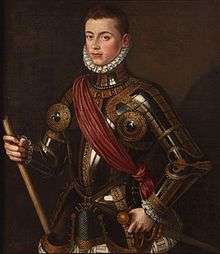

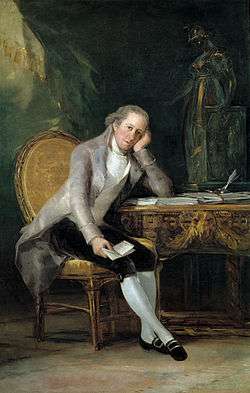
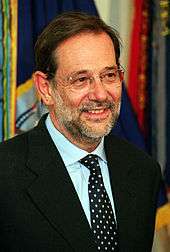
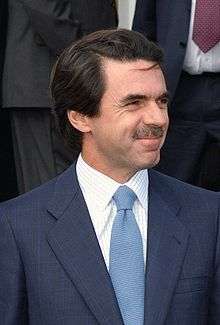

.jpg)
.jpg)

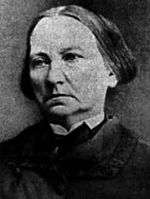

.jpg)
